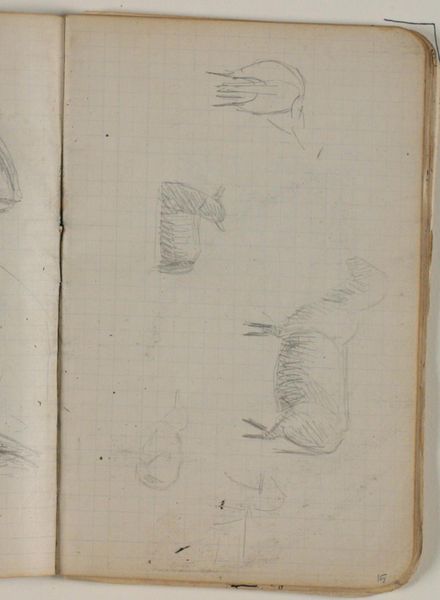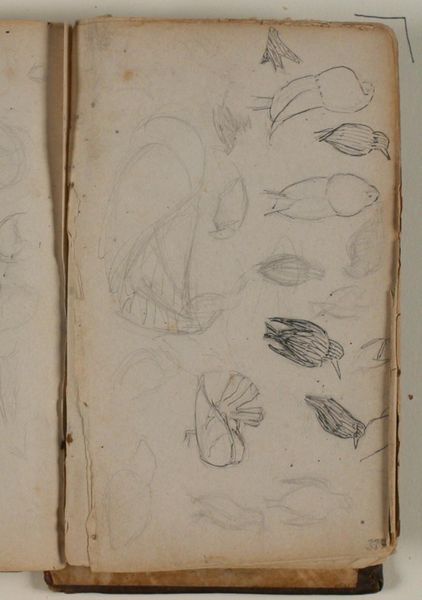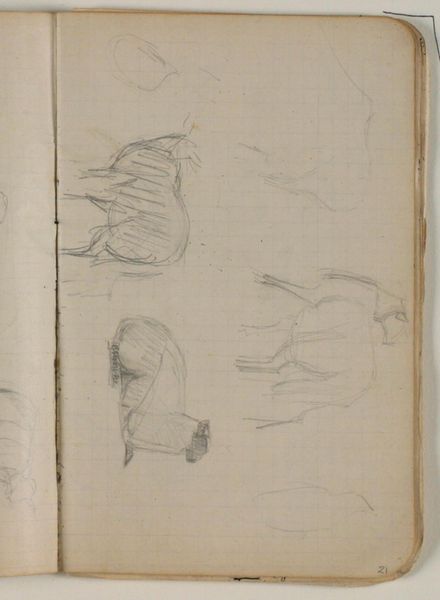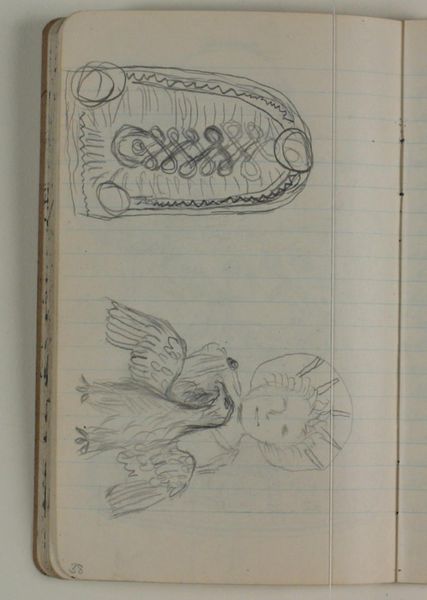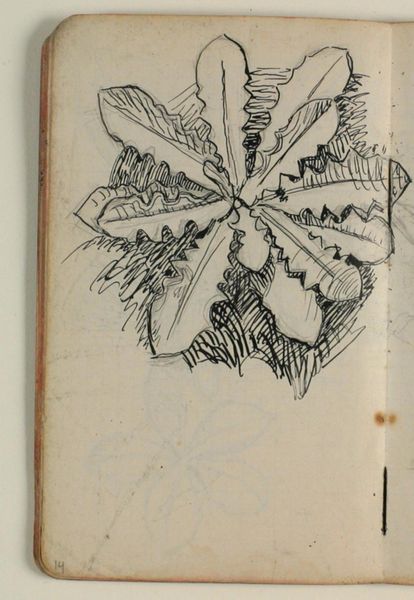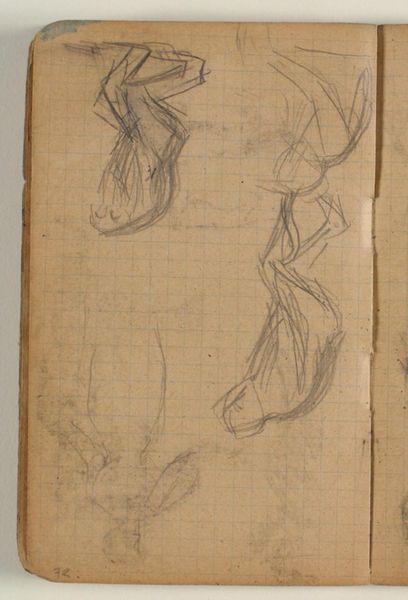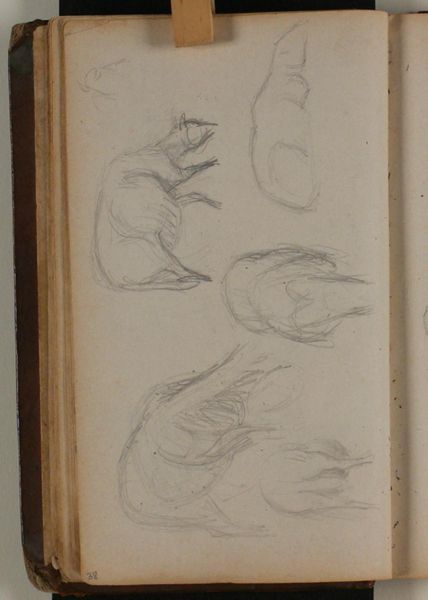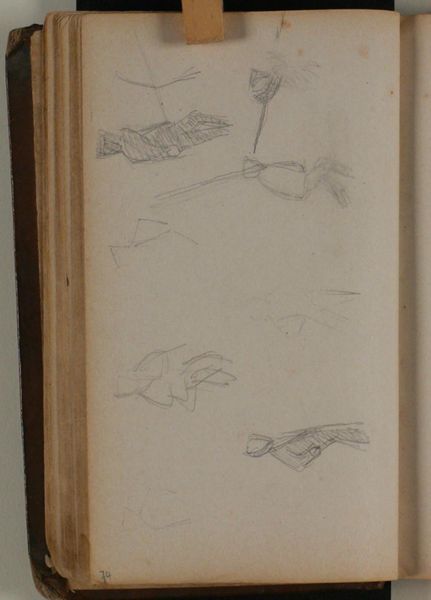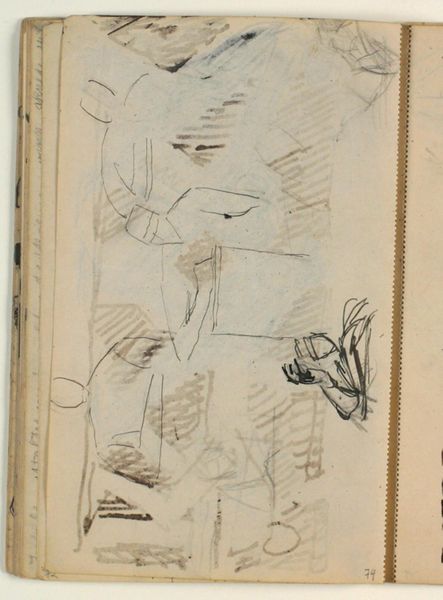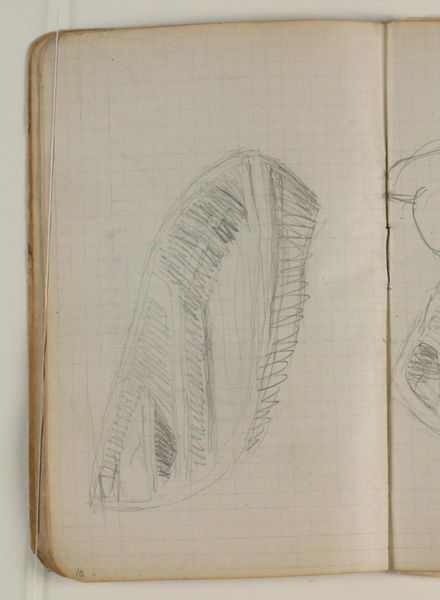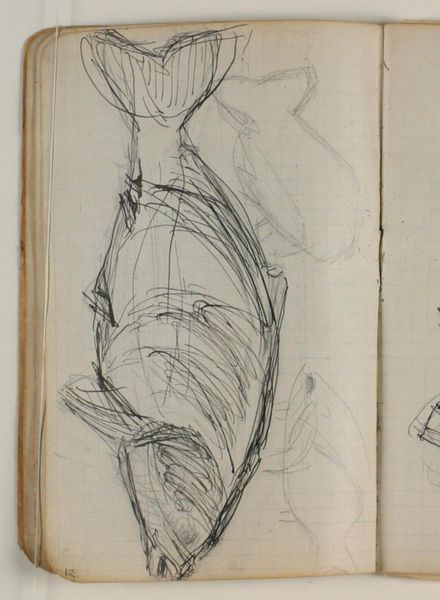
Skitse af en rustning, hjelm, skjold(?) og del af en ringbrynje 1905 - 1907
0:00
0:00
drawing, paper, pencil
#
drawing
#
paper
#
form
#
pencil
#
line
#
academic-art
Dimensions: 169 mm (height) x 109 mm (width) x 5 mm (depth) (monteringsmaal), 169 mm (height) x 109 mm (width) (bladmaal)
Curator: Right, let’s consider this sketch by Niels Larsen Stevns from around 1905-1907. It’s entitled "Skitse af en rustning, hjelm, skjold(?) og del af en ringbrynje," housed here at the SMK. He rendered it in pencil on paper. It’s academic, clean. What grabs you initially? Editor: Well, there's a kind of awkward beauty to its incompleteness, like a dream half-remembered. You glimpse these shapes—armor, a helmet, possibly a shield, a bit of chainmail—and feel the weight of history without the burden of detail. It’s just shapes becoming forms. Curator: Precisely! The “incompleteness”, as you say, reveals much about artistic labour. Stevns, like many academic artists, diligently studied historical artifacts to inform their paintings, which reveals how even the representation of labor, the costuming, so to speak, demanded dedicated craft work and knowledge. It speaks to the means of historical paintings through sketches of forms. Editor: Oh, totally. It's also evocative. There’s this inherent contradiction: the instruments of conflict, of violence, reduced to gentle lines on paper. Like taming a dragon with a feather. The lines capture the spirit or memory of it, even more, maybe, than showing its whole presence would. Curator: Indeed. And consider the social implications! Here we see artistic production at work, transforming martial objects—historically symbols of power, protection, and, significantly, wealth—into exercises. This reflects a very modern preoccupation with industrial methods of both production and destruction. Editor: Exactly. But if the aim was to produce a dry, formal study of arms and armour, why does it feel so airy, so full of suggestive energy? It's less about the thing itself and more the ghost of the thing; it feels almost impressionistic. Curator: It reminds us of the layers inherent in academic practices: they still carry artistic sensibility despite being largely practice-based, which serves to illuminate the value and craft embedded in artworks. Editor: Absolutely. Seeing the gears and machinations lets you feel for the human effort behind everything we consume. Curator: A crucial perspective for appreciating the full complexity of Stevns' work, wouldn't you agree? Editor: No disagreement here; what I love, actually, is that, seeing this work helps you approach anything in a new way. The way a drawing like this exposes what’s under the surface, revealing process, has something that the fully resolved image sometimes obscures.
Comments
No comments
Be the first to comment and join the conversation on the ultimate creative platform.
